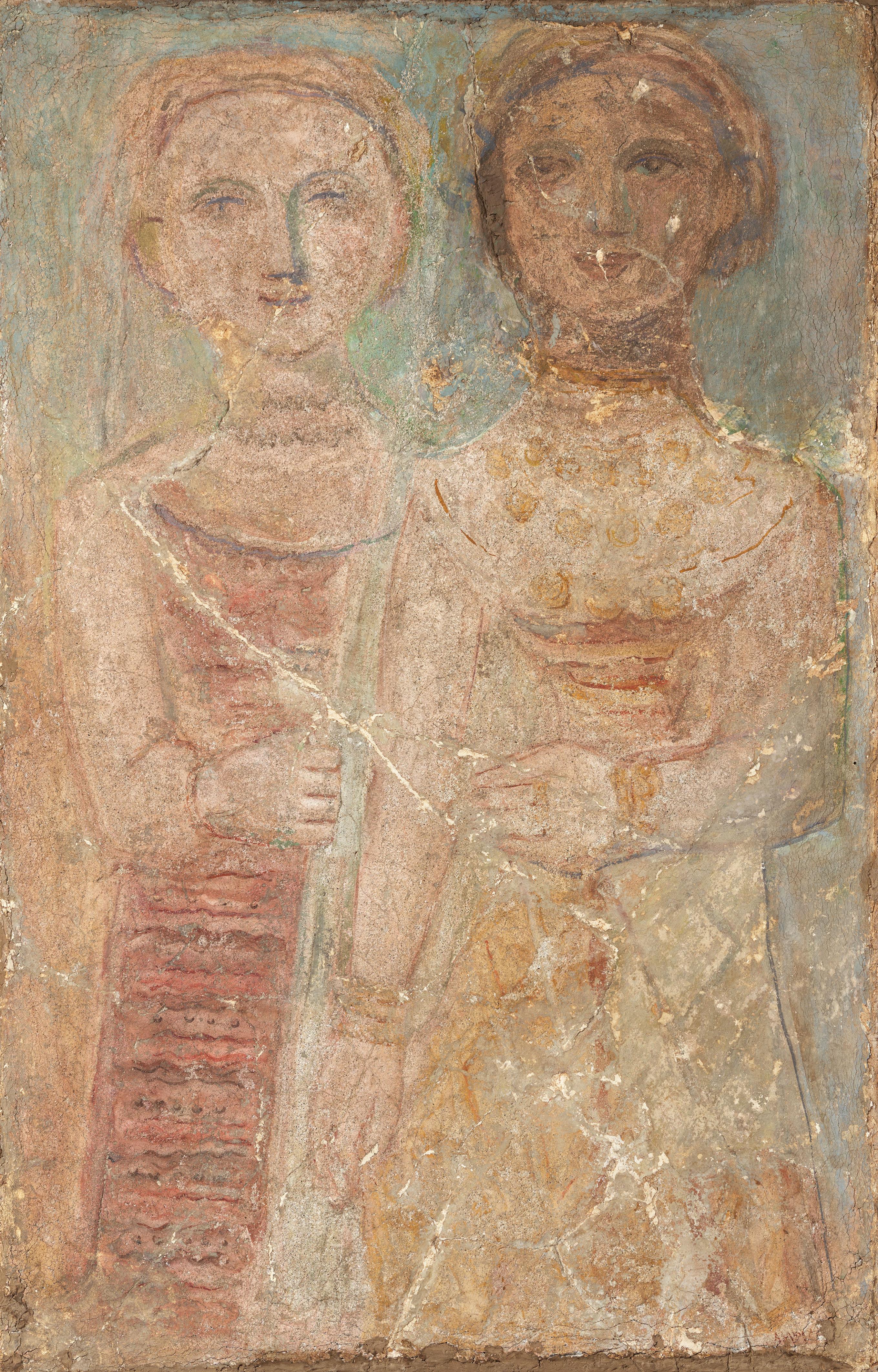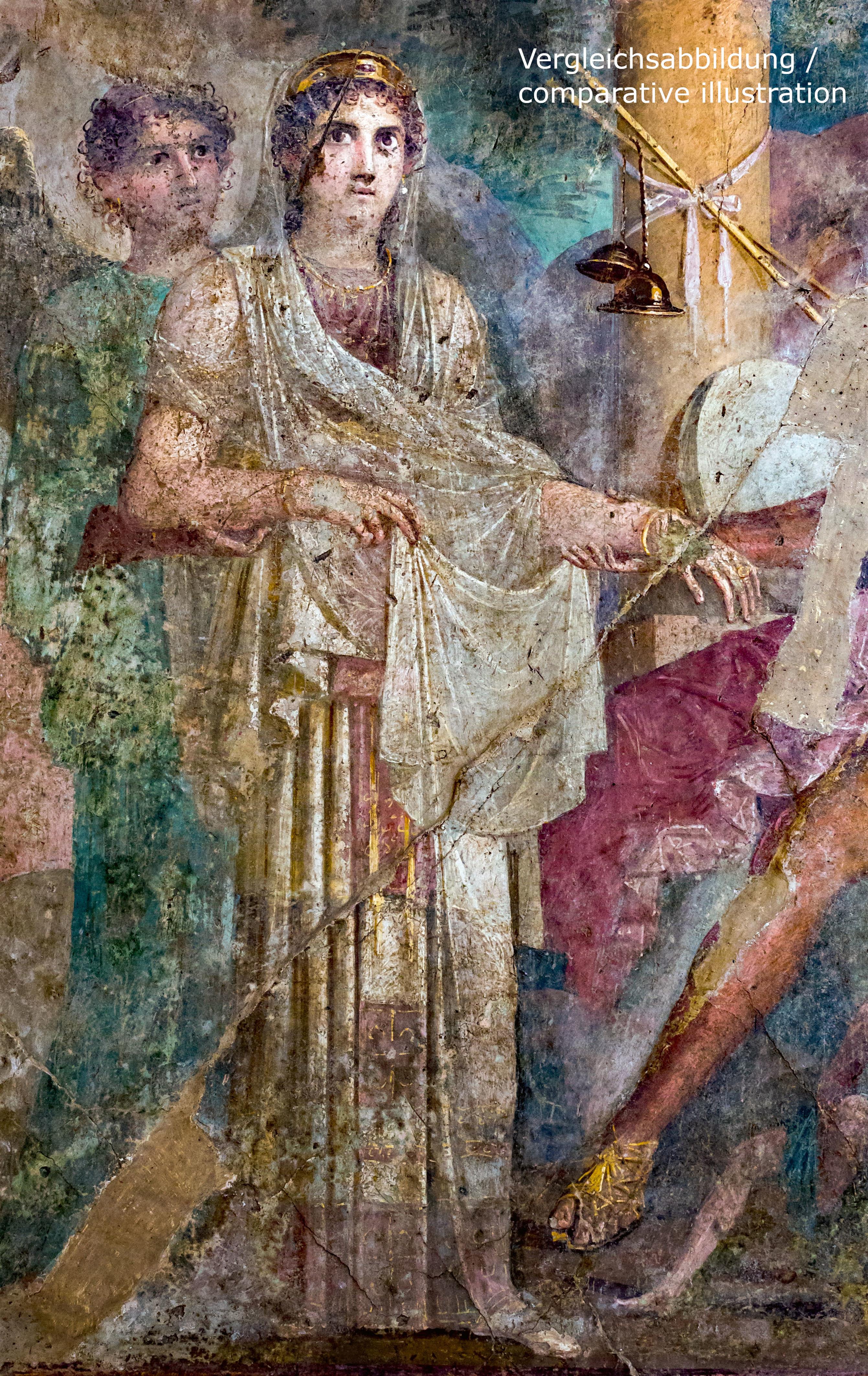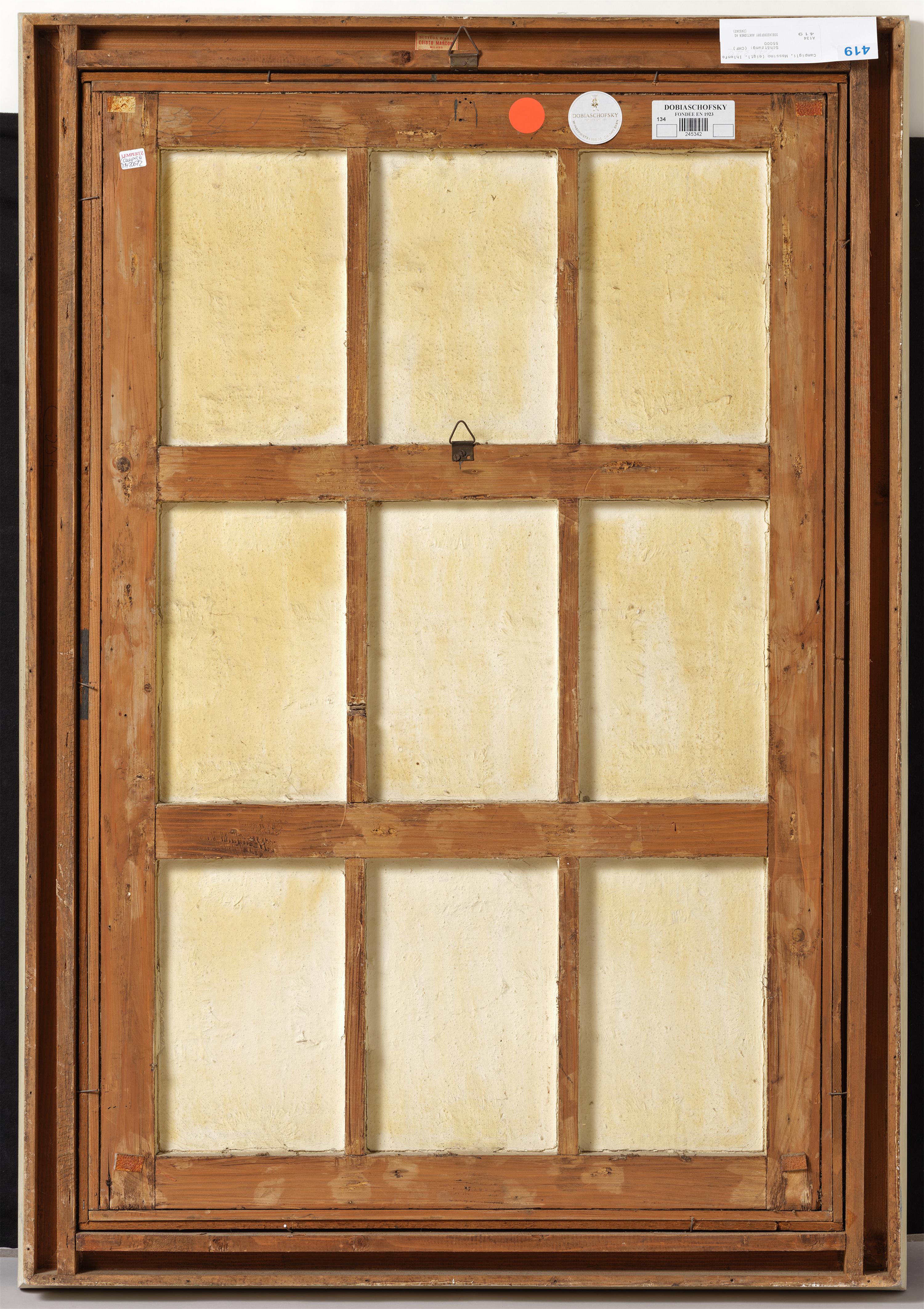Massimo Campigli
La Sposa
1938
Fresco painting, removed from the wall in 1954 and mounted on canvas. 101 x 66 cm. Framed. Indistinctly signed '[...] AMPIGLI' in brown lower right. With label of the frame maker Egisto Marconi, Bottega d'Arte Milan, on the back of the frame. - In age-appropriate condition, with restored cracks.
Aesthetically, Massimo Campigli’s work is clearly rooted in the ancient world; with their rough surface and summary brushstroke, even his oil paintings are suggestive of frescoes.
Thus, the work offered here – the 1938 fresco “La Sposa”, which presumably came from a residential building – does not fundamentally differ from his oil paintings and, instead, seems logical within the context of his oeuvre. Campigli’s figures also appear timeless and antique in terms of their motifs.
In 1933 Campigli signed the “Manifesto della Pittura Murale”, and in the years that followed he increasingly dedicated himself to working on murals in response to public commissions and competitions, such as the no longer existent painting “Le Madri, le Contadine, le Lavoratrice” for the 5th Milan triennial or the expansive fresco in Padua’s Palazzo Liviano, created from 1936 to 1941. In connection with an earlier commission, Campigli commented in this sense: “My fresco represents an idealised form of Italy’s foundations, populated with ancient objects, monuments and piles of heritage” (see exh. cat. Post Zang Tumb Tuum. Art, Life, Politics. Italia 1918–1943, Milan 2018, p. 334, p. 463).
The assimilation of ancient life as a foundation for modernity is striking in our fresco “La Sposa” (The Bride): it seems to refer directly to the wall painting “Wedding of Zeus and Hera” from the “House of the Tragic Poet” discovered in Pompeii in 1824 (see comparative ill.). Here the goddess Hera, generally associated with marriage and elegant femininity, is presented to her future husband and given into his hands, so to speak. The similarities with our “Sposa” in terms of gesture, pose and gaze are unmistakable. The ancient painting was probably familiar to Campigli from the archaeological museum in Naples, which is where many of the Pompeian frescoes were brought after being removed from the context of their pictorial programmes. Recurring back to ancient painting, Campigli found a modern form to celebrate the festive moment of the wedding and capture it in his mural.
Certificate
With a photo-confirmation by Massimo Campigli, Mercurio, Milan, dated 28 June 1968. Eva Weiss, Munich, will include the work into the Archive Campigli. We are greatful for her additional advice.
Provenance
Castellano collection, Milan; Gino Moro, painter, Milan (acquired from the previous owner in 1954); Private collection, Switzerland






